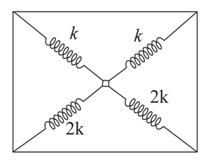When the system shown in the diagram is in equilibrium, the right spring is stretched by . The coefficient of static friction between the blocks is . There is no friction between the bottom block and the supporting surface. The force constants of the springs are and . The blocks have equal mass of . each.
Find the maximum amplitude (in ) of the oscillations of the system shown in the figure that does not allow the top: block to slide on the bottom.


Important Questions on Plan and conduct an investigation to provide evidence that the transfer of thermal energy when two components of different temperature are combined within a closed system results in a more uniform energy distribution among the components in the system (second law of thermodynamics).
Two identical springs of spring constant are attached to a block of mass and to fixed support (see figure). When the mass is displaced from equilibrium position on either side, it executes simple harmonic motion. The time period of oscillations of this system is :

In the given figure, a body of mass is held between two massless springs, on a smooth inclined plane. The free ends of the springs are attached to firm supports. If each spring has spring constant the frequency of oscillation of given body is:
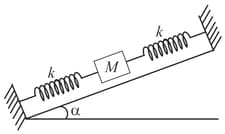
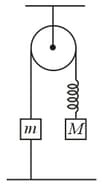
The pulley and the strings are massless and . The spring is light with spring constant . If the string connecting to the ground is detached, then immediately after detachment
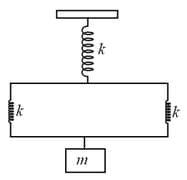
A tray of mass is supported by two identical springs as shown in figure. When the tray is pressed down slightly and then released, it executes SHM with a time period of . The spring constant of each spring is
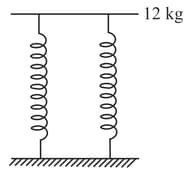
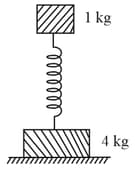
In the given figure, a mass is attached to a horizontal spring which is fixed on one side to a rigid support. The spring constant of the spring is The mass oscillates on a frictionless surface with time period and amplitude When the mass is in equilibrium position, as shown in the figure, another mass is gently fixed upon it. The new amplitude of oscillation will be:
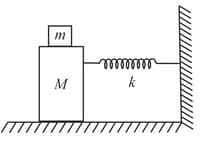
A particle of mass is attached to four springs with spring constant and as shown in the figure. Four springs are attached to the four corners of a square and a particle is placed at the center. If the particle is pushed slightly towards any side of the square and released, the period of oscillation will be
